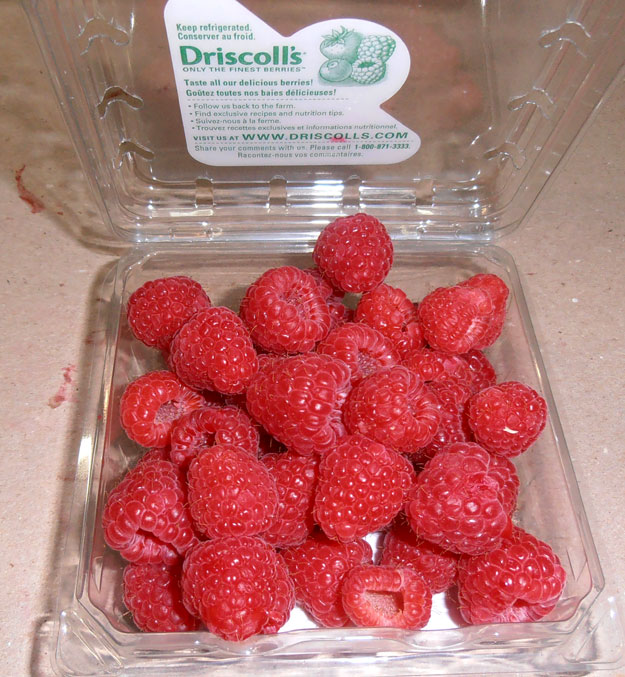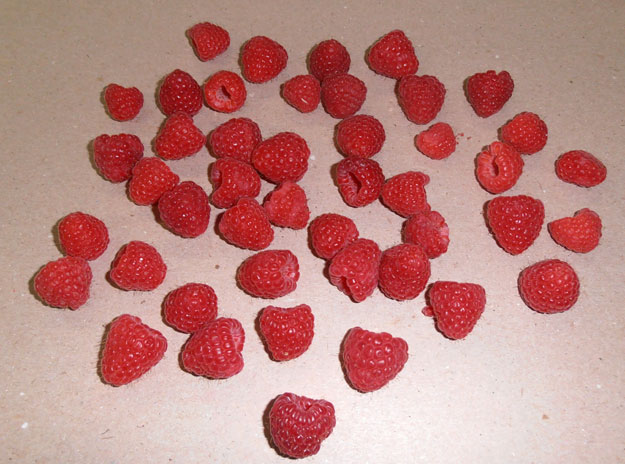Raspberries and Blackberries have one thing in common, different from every other commodity. When determining the percent of defects, the US Grade Standards state the tolerances are based on volume. Do you have any idea how this is done? Don’t feel bad, I have never met an inspector (USDA, State, or industry) that actually follows this rule.
All other commodities state the defect tolerances are based on a count basis or a weight basis. Let’s use cucumbers as an example. You count 50 cucumbers to make up your sample. If you find 4 decayed cucumbers the percent is determined by: 4 defects ÷ 50 total = .08 x 100 = 8%. If your sample size was 63 count, and you found 4 decayed cucumbers, then you would have: 4 ÷ 63 = .06 x 100 = 6%. This is very straight forward. Some commodities vary in size within a sample, so because they lack uniformity the US Standard states that the defect tolerances are determined on a weight basis. Using potatoes as an example; if you found 3 potatoes within your 20 pound sample with soft rot, you would have to weigh the 3 defective potatoes. We’ll say they weighed 1.25 pounds.
To determine your percentage; 1.25 lbs of soft rot ÷ 20 lbs sample = .06 x 100 = 6%.
But for raspberries annd blackberries you would base the defect tolerances on a volume basis.

Step 1: Open the clam shell, and carefully pour out the contents. You will be inspecting all raspberries within the clam shell.

Step 2: Even though the tolerances are based on volume, you have to count out all the raspberry in the clamshell. In this example you have 45 raspberries. So, 1 raspberry is equal to 2% (1/45). Because the tolerances are based on volume, it is more accurate to say, 1 average size raspberry is equal to 2%.

Step 3. You will have to determine what you consider to be an average size raspberry for your sample. If the raspberry on the far right is your “average” size raspberry, then any defective raspberries you find, that are equal to the average size, would be equal to 2%. If the defective raspberry was twice the size of the “average” raspberry, then the percent would also double, to 4%. If the raspberry is smaller than the “average” raspberry (such as the berry, 2nd from the right), and is half the size of the average size, then the percent would equal 1%.
Does anyone actually go through this exercise when inspecting raspberries or blackberries? No. Chances are the sizes of the defective raspberries will average out during your inspection, and the percentages will still be accurate. Inspectors do count out the raspberries to determine their sample size, they do separate their defects, soft, leaking, decayed, etc. and simply count the defective berries. Using this example, if they find 15 berries that are soft, the percentages are determined by: 15 soft ÷ 45 total berries = .33 x 100 = 33%.

No Comments on “Raspberries- Tolerances”